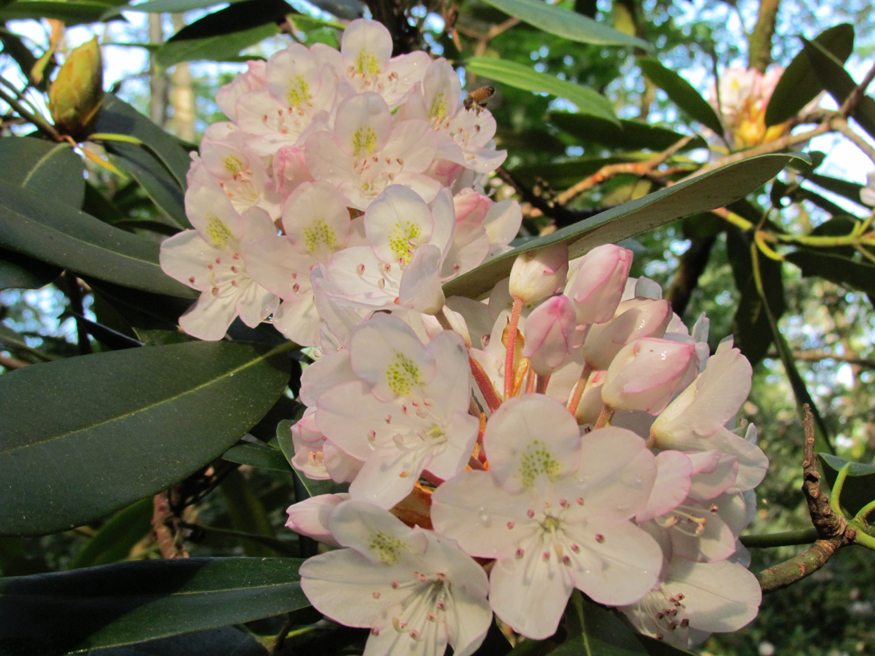
Flora in the Abrams Falls area of the Smoky Mountains is abundant. Mountain laurel (pictured above) is one of the most beautiful flowers you will see. It blooms in the spring time and can be viewed throughout the National Park.
Image by Jeaneane Payne
read moreAbrams Falls Trail has a rich diversity of plant life, including numerous trees, shrubs, and wildflowers. Dominant tree species include tuliptree, American beech, and various maples and birches. Flowering shrubs like rhododendrons and azaleas add vibrant colors, especially in spring and summer, while wildflowers such as trillium, fire pink, and crested dwarf iris carpet the forest floor.
Trees: The forests of the Smokies are known for their diverse tree species. Tuliptrees (Liriodendron tulipifera) and American beech (Fagus grandifolia) are particularly prominent, along with various maples like sugar maple (Acer saccharum) and yellow birch (Betula alleghaniensis).
Shrubs: The Smoky Mountain area is home to eleven species of native rhododendrons, including the rosebay, Catawba, and Carolina rhododendrons, as well as several species of azaleas. Mountain laurel (Kalmia latifolia), with its white and pink flowers, is another common shrub, often mistaken for rhododendron.
Flowering Plants: Spring ephemerals are abundant, with wildflowers like trillium (including 10 different species), lady slipper orchids, crested dwarf iris, fire pink, and numerous others. You'll also find a variety of other flowering plants like blue phlox, foamflower, and fringed phacelia.
cOther Plant Life: The Smokies are also a global center for bryophytes (mosses, liverworts, and hornworts), with over 450 species identified. Additionally, there are around 50 species of ferns and fern allies, and at least one horsetail species.
Heath Balds: Steep crests and slopes in the park are home to heath balds, where plants like kitaba rhododendron, sand myrtle, and other mountain plants adapted to shallow, acidic soil thrive.
Invasive Species: While the park is known for its biodiversity, it also has its share of non-native and invasive plants, such as kudzu, mimosa, and Oriental bittersweet, which staff have identified as problematic.
Other Plant Life: The Smokies are also a global center for bryophytes (mosses, liverworts, and hornworts), with over 450 species identified. Additionally, there are around 50 species of ferns and fern allies, and at least one horsetail species.
Heath Balds: Steep crests and slopes in the park are home to heath balds, where plants like kitaba rhododendron, sand myrtle, and other mountain plants adapted to shallow, acidic soil thrive.
Invasive Species: While the park is known for its biodiversity, it also has its share of non-native and invasive plants, such as kudzu, mimosa, and Oriental bittersweet, which staff have identified as problematic.
From wildlife to the sounds of nature